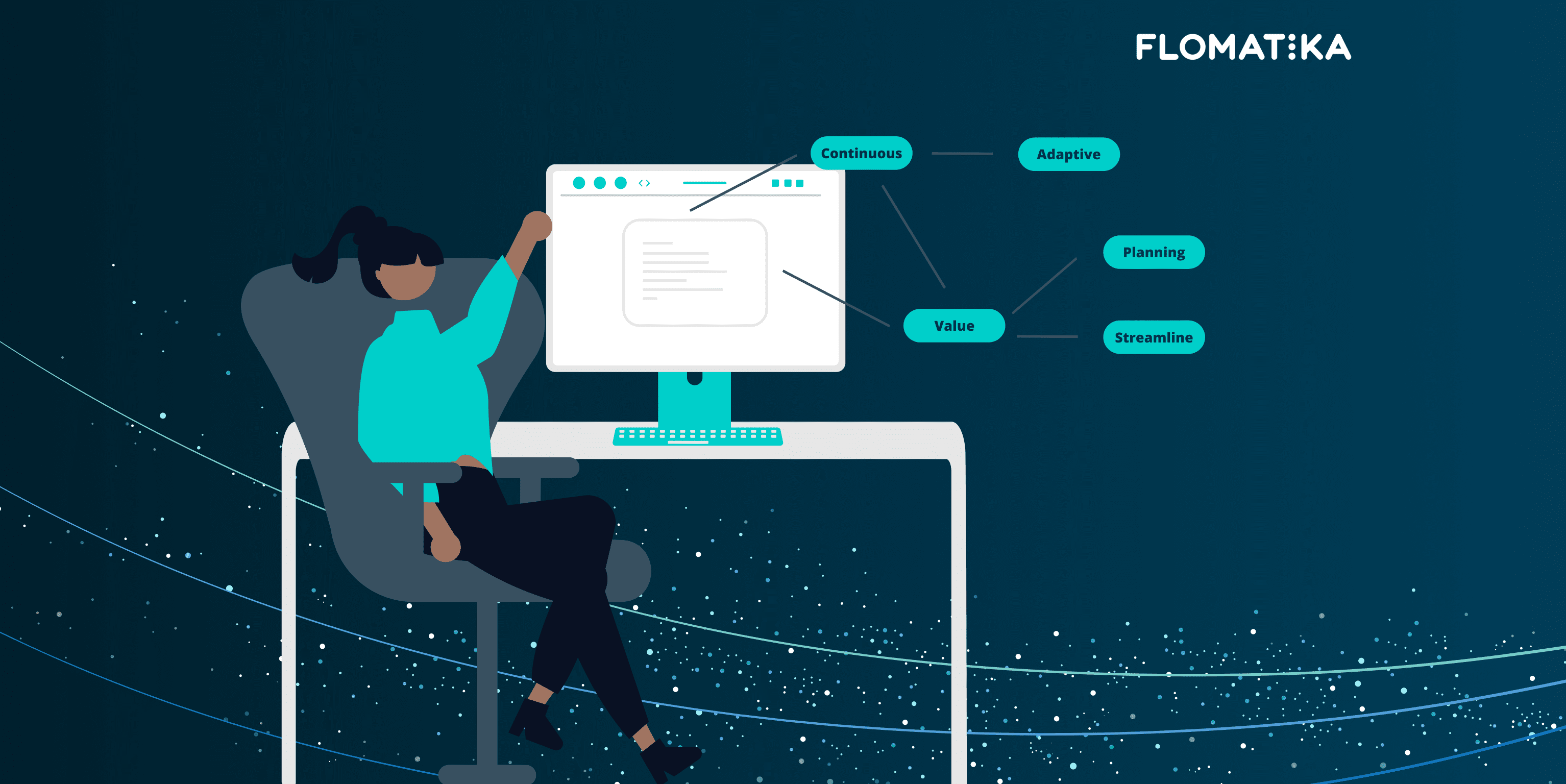How visibility is the key to continuous improvement in delivery
.jpg)
Are you ready to optimise your delivery ecosystem today?
book demoAs the world continues to see the advantages that lie in a shift to an agile way of working, the structure and format of software delivery remains forever changed. Namely, the decision-making power has shifted. Where the responsibility once sat squarely on the shoulders of the ‘leader’, trickling down through the hierarchy, this decision-making power now extends to those closest to the work—the agile teams operating and innovating rapidly to deliver it.
While this provides for faster and more customer-centric releases, it’s clear that leaders don’t have the visibility they once did, which can inhibit your pursuit of continuous improvement. Instead of directives, they give their agile teams implicit trust, forgoing control and visibility for autonomy and speed. Which, in essence, sounds like a good trade off. Unfortunately, a lack of clarity around the end-to-end flow of software delivery can make it more difficult to improve the overall system.
That’s because visibility is the key to continuous improvement in delivery.
The persistent pressure to improve
As industry leaders, like Apple, IBM, Microsoft, and Procter & Gamble, continue to pave the way for agile ways of working, organisations are under increasing pressure to move towards continuous improvement in delivery—after all, that’s where competitive advantage lies.
However, making the move to agile working doesn’t necessarily guarantee continuous improvement. Far from it. Overhauling your delivery model can come with its own set of challenges, namely maintaining momentum as you move to new ways of working, something that can be slowed down by existing barriers to change. That being said, if—like a lot of the world’s top companies—you’re chasing continuous improvement, you need to find ways to work smarter, not harder, as that’s where true competitive advantage is earned.
The trick to unlocking it is visibility across your ecosystem, only then can you convert that pressure into performance.
The appeal of continuous improvement
While it’s largely dependent on the size of your business and level of adoption, the benefits of continuous improvement are ample—if your teams and leaders aren’t inhibited by barriers to visibility.
One of the biggest advantages is greater employee engagement. The creation of a more open and productive culture empowers workers with greater responsibility by encouraging teamwork and collaboration that in turn leads to more job satisfaction. And employees who experience higher job satisfaction can become powerful agents for change and improvement whose loyalty produces even better results in the long term. It also gives them the power to solve their own problems, improving overall efficiency.
Secondly, continuous improvement (supported by the right platform) results in improved customer service because it gives you better insights into your customers’ needs, allowing you to anticipate them more quickly and accurately. And because the nature of continuous improvement involves making small, incremental improvements to your processes, it has the capacity to make processes more efficient, reducing waste that'll in turn lead to increased profit margins.
Eliminating wasteful steps in processes will lead to higher productivity and faster delivery, which gives you a competitive edge over companies who can’t get their products to market as swiftly.
Importantly too, making your objectives and strategies clearer can give your value streams more focus. Continuous improvement is key to helping unite your teams around the company’s future vision, ensuring you get there sooner. Suffice to say, the benefits of continuous improvement can be far-reaching and substantial.
The problem: you can’t manage what you can’t measure
All of the benefits mentioned rely on one thing—visibility. Continuous delivery means orchestrating the activities of a large number of teams, something that can’t be done effectively without clarity across the entire value stream. An alarming reality, however, is that processes are invisible.
This lack of visibility associated with cross-domain working can lead to a number of common challenges:
- Misalignment
- Lack of direction
- Miscommunication
- Information scattered across different tools
- In-house politics
- Different culture and leadership styles across different areas and leaders
- Dysfunctional management behaviours
- Confusing prioritisation
- Unhandled dependencies
- Sequencing the work
This is all because your teams are working at different cadences and with different taxonomies and ways of working, making them near impossible to align or coordinate. Eventually, many of these issues can manifest in a lack of collaboration that sees workers striving for different goals and measures of what good looks like.
To achieve this critical visibility, you need to be able to map your value streams and thereby reduce process wastes. Being able to make visible where there’s waste gives the front-line and management clear visibility into what gains are worth pursuing.
Visibility is also important to allow leaders to identify and manage cross-team dependencies and risks. With agile approaches, teams are given the autonomy to find the best way to work within their own contexts (local optimisation). But one area where they need help is in resolving cross-team frictions. Leaders have the influence to enable teams to work together better, whether it's through making priority calls, helping to manage and mitigate cross team dependencies and risks, or realigning teams to the higher-level, strategic objectives.
By having this understanding of where your company is heading, you’re in turn improving the way value is delivered to your customers, addressing their needs more efficiently, and earning their loyalty in return. It also helps you with effective prioritisation and making the right calls on trade-offs.
This forward trajectory is in essence a chain of small improvements that, incrementally, create excellence, leading to an evolution in operational efficiency and value delivery, giving you true competitive advantage. Then, with full visibility of these processes and results, you can support sustainable progress because new improvements will always be in the sights of your teams and workers. It’s this transparency that’ll make future improvement expectations part of your company’s DNA, paving the way for greater value on both sides of delivery.
The solution: how to unlock visibility as a leader
The true unrivalled transparency required by continuous improvement can only be achieved by comprehensive and intuitive technology. If you can find the right software partner, you’ll have priceless insights on your service levels, time-to-market, productivity, predictability, quality, flow efficiency, and profile of work.
By adopting robust software like a virtual Obeya room, you’re empowered with a consolidated view of your entire value stream from a single dashboard equipped with role-based views. This will infinitely improve leaders’ real-time visibility and help you refocus your teams on what’s working, shifting them away from what’s not.
This is where Flomatika makes agile working more valuable, by improving speed to value, proving ROI, removing bottlenecks, boosting productivity, more accurate forecasting, understanding capacity, and—most crucially—empowering clarity.










%20(1).jpg)
.jpg)
